I’ve recently had the privilege to speak to Christian Selmoni, Style and Heritage Director at Vacheron Constantin about four stunning watches it has created for its Métiers d’Art collection as part of its partnership with Musée de Louvre. In 2019, Vacheron Constantin partnered up with the Louvre in Paris and notably participated in 2020 to a charity auctions sale curated by Christie’s and Drout to raise funds for a new 1,200m2 space onsite fully devoted to education. Simultaneously, it had started to work with the Louvre on the creation of this series of stunning timepieces, inspired by four of the greatest civilisations in the history of mankind: the Persian Empire of Darius the Great, the golden age of Ancient Egypt, the Hellenistic period of Ancient Greece and the rise to power of Augustus, the first Roman emperor.
To these civilisations we owe the invention of writing, the birth of democracy and philosophy, monumental architecture and incomparable artistic achievements. Our languages, customs, politics… even our vision of the world originate from them.
“At Vacheron Constantin we love celebrating human adventure and have always been very close to the world of arts and culture,” shares Christian. This Métiers d’Art series is an excellent example of this affinity. Myriad decorative techniques have been used to depict on the dials four masterpieces held at the Louvre Paris, representing each of the aforementioned civilisations. Christian points out that “building the dials of these watches was very complicated. They are made of different layers to make them three-dimensional and each involves very difficult artisan techniques.”
The cultural symbols were created in the form of sculpted gold appliques. In addition, the watches incorporate a subdial adorned with motifs drawn from decorative arts of the time. Texts representative of the periods concerned are reproduced in their original form – cuneiform writing, hieroglyphs, ancient Greek and Latin – by metallisation on the sapphire crystal (the last layer of the watch) bearing the sculpted applique.
At Vacheron Constantin we love the world of arts and culture and celebrating human adventure…
– Christian Selmoni
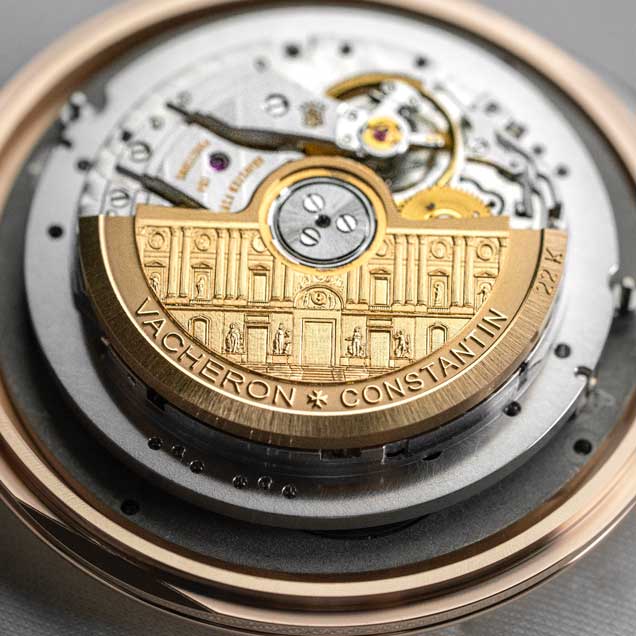
Needless to say, reproducing such works of art on a less than 40mm circle presented a few challenges to the master artisans at Vacheron Constantin. The techniques Christian refers to are some of the most complex known in artistic craftmanship, including champlevé and grisaille enam- elling. The first one consists of creating cavities in which the enamels are applied with the successive layers being fired in a kiln. The second means the application of white enamel touches to an underlying dark coating, also firing each of the layers.
Another technique used here and rarely seen in the world of watchmaking is stone marquetry, which forms patterns with fragments of coloured stones leaving tiny spaces between the components to give relief and depth to the composition. Stone micro-mosaic, which is even rarer in this industry, was used to assemble the almost-microscopic pieces in a way that renders the joints that seal them practically invisible. Last, the pounced ornament engraving technique used in these watches for the carved gold sconces – known as ramolayage, is a trompe l’oeil particularly suitable for creating the illusion of depth of field.
To power these pieces, Vacheron Constantin has chosen its self-winding Manufacture Calibre 2460 G4/2, which features four discs indicating the hours, minutes, day and date. “The apertures for reading the time and calendar indications are symmetrically posi- tioned around the dial periphery,” explains Christian, “to leave a vast field of expression for the artisans without any hands to disturb the view of these miniature masterpieces.”
On the back of the movement, beating at a rate of 4Hz and comprising 237 compo- nents, there is a 22K rotor in gold. “The oscillating weight features a depiction of the east facade of the Louvre,” Christian points out, “inspired by an 18th-century lithograph by Louis Le Vau and Claude Perrault.” Each of these timepieces deserve individual attention, so I asked Christian to walk me through them.
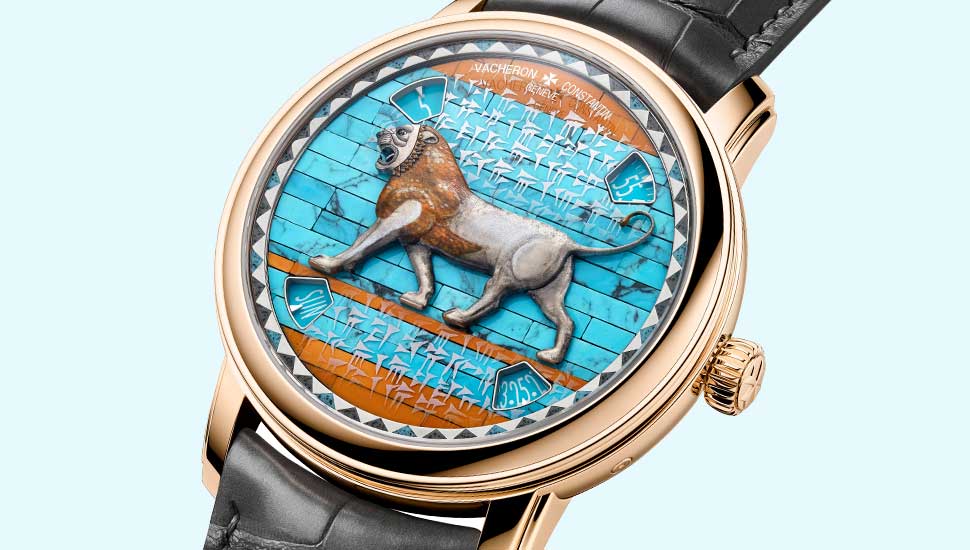
Lion de Darius – Persian Empire (559 – 330 BC)
The Frieze of Lions, made of siliceous glazed bricks bound with lime mortar, was located in the first courtyard of the palace of Darius the Great in Susa, the capital of the Persian Achaemenid empire, which stretched from present-day Pakistan to the shores of the Black Sea, and from the steppes of central Asia to Egypt and Libya, uniting the oldest civilisations in the Middle East. The lion, symbol of power, was an important part of Persian iconography and before them, Assyrian and Babylonian. Darius the Great was not just King of Kings, but also an administrative genius. His great building projects and his benevolence toward the diverse peoples under his sovereignty fortified his vast empire and enhanced trade throughout.
The frieze was particularly challenging for the artisans, who bravely chose stone marquetry (turquoise and mochaite jasper) to accentuate the realistic look of the glazed bricks that were originally affixed to the background wall, and showed their nerve by choosing fragments with veins (even more delicate). The lion itself is hand-engraved in gold with some patina to create the effect of time passing. “We had to order three sets of stones to be able to finish the background,” comments Christian.
Also at the Palace of Darius, the Frieze of Archers is recreated surrounding the dial, by the juxtaposition of triangles made of engraved metal and champlevé enamel with “ageing” inclusions. The cuneiform script engraved on the sapphire crystal is taken from a tablet inscribed in Old Persian.
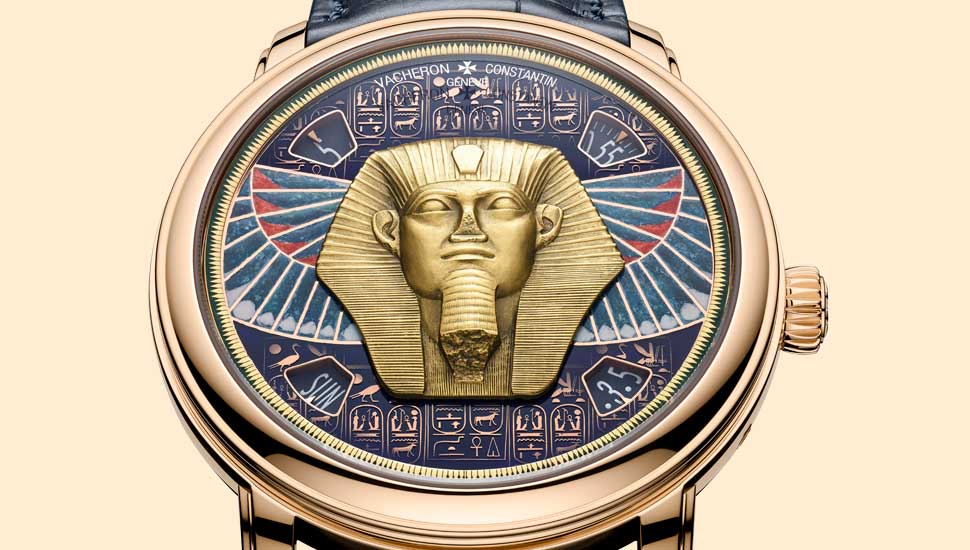
Grand sphinx de Tanis – Ancient Egyptian Empire (2035-1680 BC)
A royal symbol, the sphinx is a hybrid comprising the body of a lion and a human head wearing the Nemes – the royal headdress – and the beard of sovereigns. All the power of the pharaoh is expressed through this fabulous animal, linked to the Middle Kingdom (approx. 2035-1680 BC), considered the golden age of Egypt. It was probably carved for King Amenemhet II, whose cartouche it bears. Other kings appropriated it by affixing their own: Apophis, Merneptah and Chechonq I. In this watch, the sapphire crystal is engraved with a transcription of the cartouche of the pharaoh Merneptah (1213 – 1203 BC), son and successor of Ramses II under the heading: “The king of Upper and Lower Egypt Ba-en-Ra-mery-Amon. The son of Ra Merneptah who is satisfied with the Ma’at, endowed with eternal life.”
The decorative dial elements are inspired by the necklace depicted on the carton- nage coffin of Nakht-khonsou-irou (22nd dynasty), trimmed with petals in champlevé enamel sprinkled with inclusions “to give the outer frieze an aged appearance” explains Christian, “under the necklace you can see a winged hawk with a ram’s head and the plumage is also done in champlevé enamel. The deep colour of the blue and black enamels used required six firings in the kiln.”
For the engraver of the carved gold applique representing the head of the sphinx, rendering the large false beard within such a small space was a particular challenge. The master artisan had to work in relief using the pounced ornament technique, despite the thinness of the plate, before accentuating the depth effect by patinating the material with a blowtorch and then by hand. The main dial is made of enamel whose deep colour, a mixture of blue and black enamels, is obtained after six firings in the kiln.
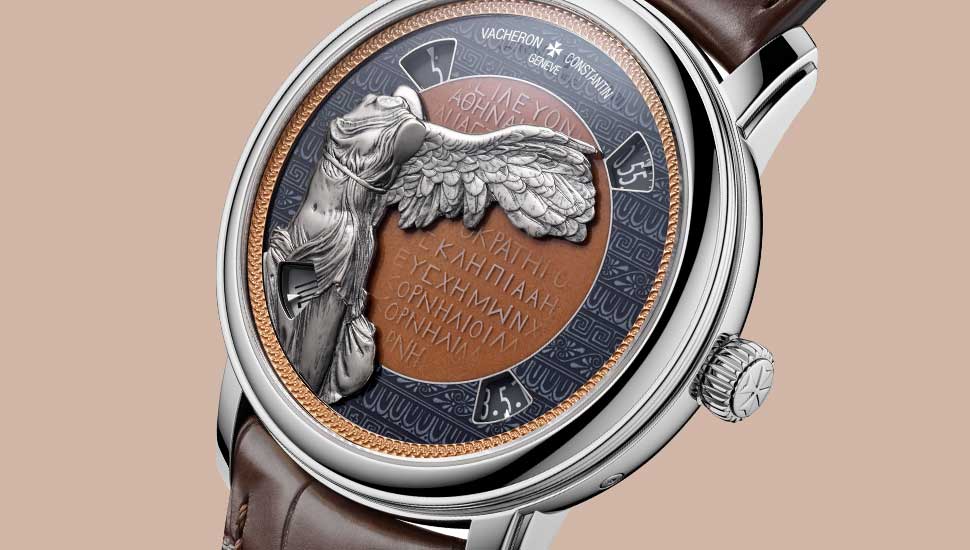
Victoire de Samothrace – Hellenistic Greece, Antigonid dynasty (277 – 168 BC)
This statue of Victory (Niké in Greek), a winged goddess resting on the prow of a warship, was discovered in 1863 on the island of Samothrace in the Aegean Sea. Excavated from a sanctuary dedicated to the Great Gods widely worshipped through- out the Greek world, it depicts an offering linked to the battles of Side and Myonnesus in 190 and 189 BC. These two battles saw the kingdom of Pergamon, allied with the Rhodians and the Romans, triumph over its traditional enemies, the kingdoms of Antioch and Macedonia.
Christian points out the difficulty for the engraver to reproduce the subtleties of marble carving seen in the drapery of the original statue, which seems ruffled by the wind. The centre of the main dial is enam- elled in a very rare brown, which requires six firings and the periphery features grisaille enamelling depicting bas-relief sculpted Greek ceramics and vases. The sapphire crystal of this watch is engraved with a dedication to the Great Gods discovered in the Temple of Samothrace, listing Athenian initiates guided by Socrates.
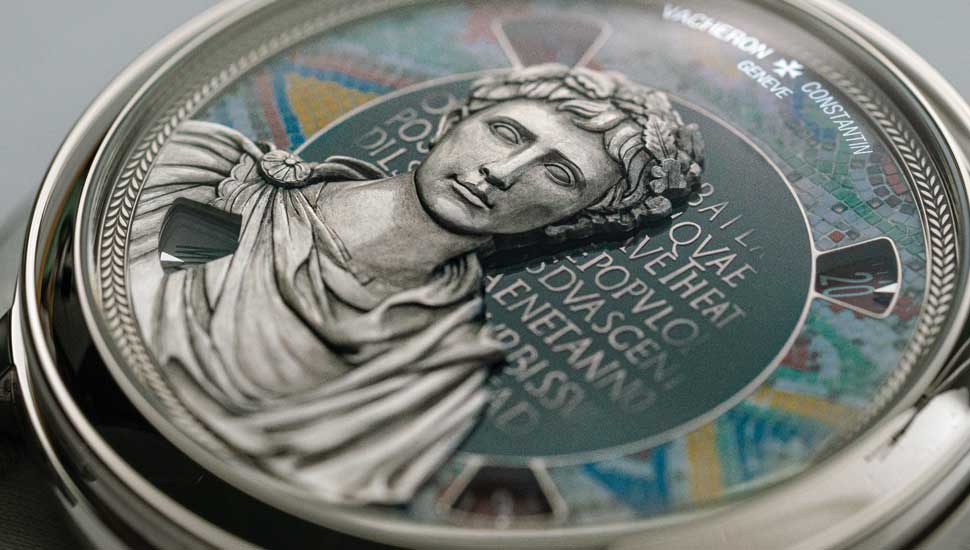
Buste d’ Auguste – Roman Empire, Julio-Claudians (27 BC – 68 AD)
Octavian Augustus is considered the first Roman emperor. After defeating Mark Antony and Cleopatra in Egypt, he ended a long period of civil wars marking the end of the Republic.
The Julio-Claudian dynasty, of which he was the first “prince”, ended with the suicide of Nero in 68AD. The oak wreath he wears in the original sculpture was a distinction awarded to him by the Senate in 27BC, when he became the principate or first citizen of Rome. In this carved gold applique, the master artisans at Vacheron Constantin echo the curling locks held by the oak crown in the fibula that secures the drape of the cape to the breast plate. Christian points out, “Notice how the bust is off-centre to avoid a medallion effect.” Very subtle, very cool.
The centre of the dial is enamelled in blue-green, while its periphery is adorned with stone micro-mosaic. Any error in the positioning and gluing of the tiny hard stone fragments would have required re-enamelling the Grand Feu dial used as a base. Seven different types of stones – 660 pieces in all – were needed to compose this micro-mosaic: quartzite, cacholong, dumor- tierite, mochaite, red jasper, grossular, and red aventurine. For the outer frieze in white gold, featuring line engraving and pati- nated by firing in the kiln, another mosaic served as inspiration: this one depicting animals playing musical instruments, also from the fourth century. The sapphire crystal is engraved in ancient Latin with an invocation to the emperor Augustus found on a Roman stele in Algeria.
The watches in this collection feature hours, minutes, day of the week and date in apertures and are available in 18K rose and white gold, with a 42mm diameter case, in a limited edition of five each, all of them Hallmark of Geneva certified.









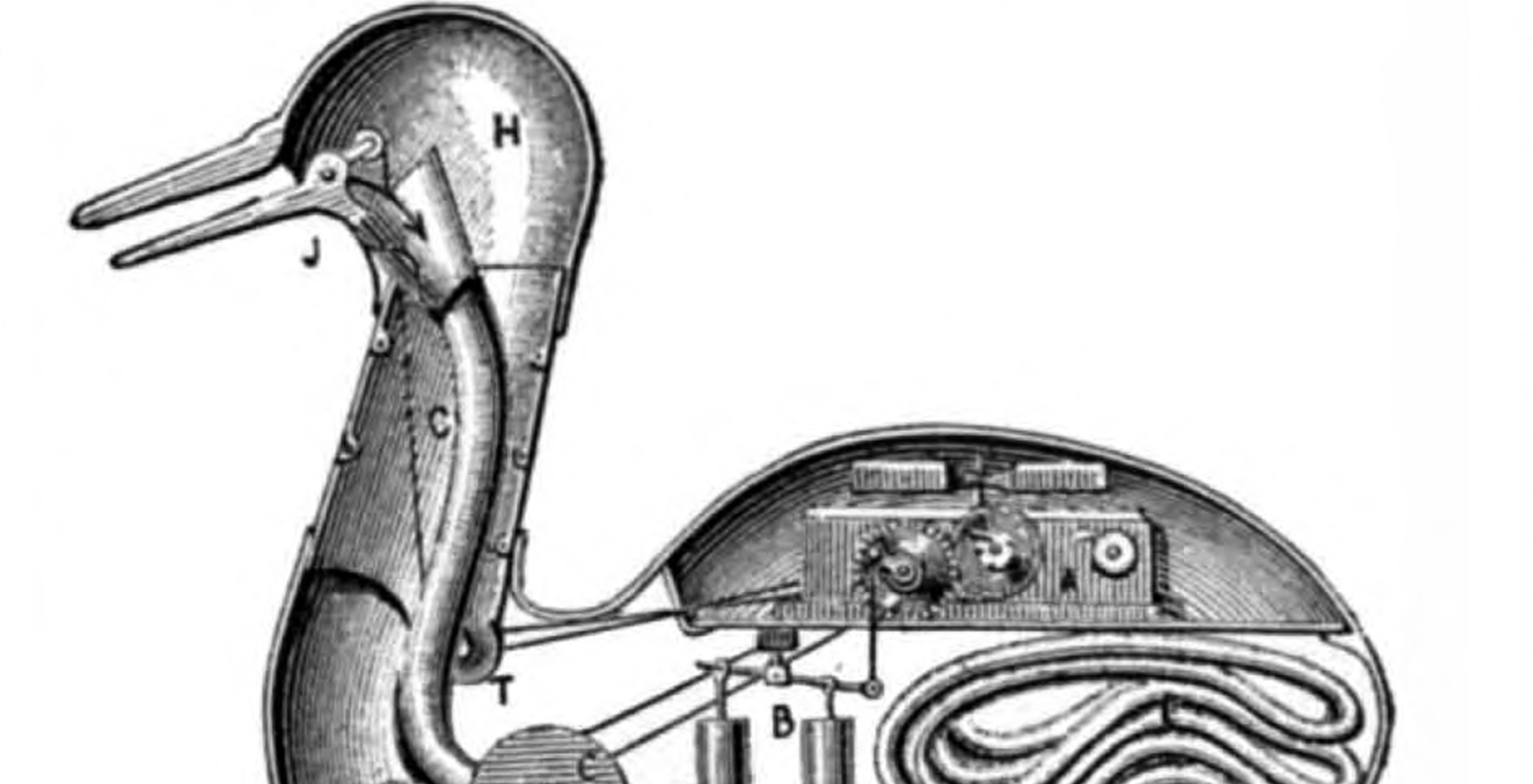



Show Comments +